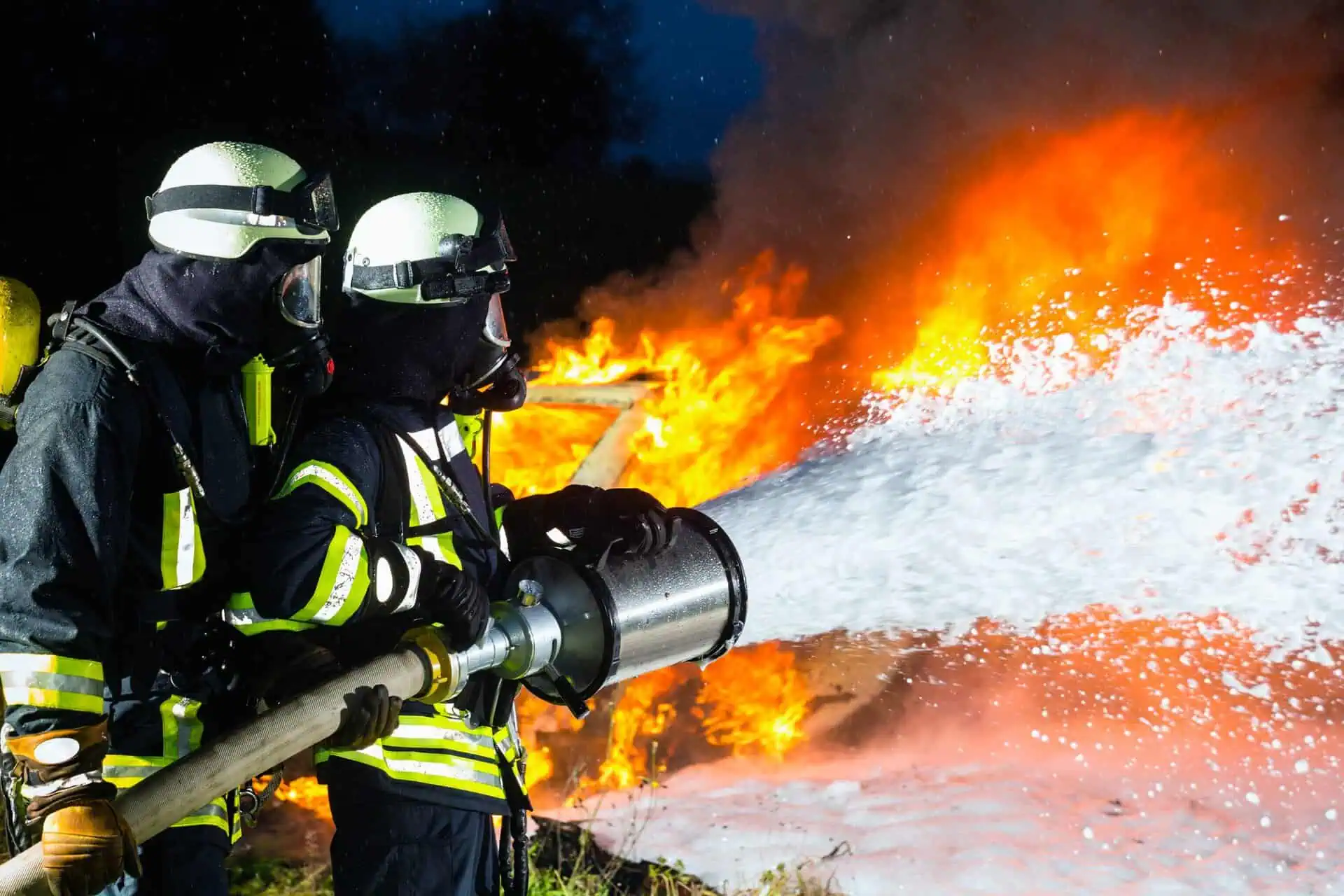What Firefighters Should Know About the AFFF Lawsuit
- Last Updated: July 14th, 2025

Attorney Jessica Paluch-Hoerman, founder of TruLaw, has over 28 years of experience as a personal injury and mass tort attorney, and previously worked as an international tax attorney at Deloitte. Jessie collaborates with attorneys nationwide — enabling her to share reliable, up-to-date legal information with our readers.
Legally Reviewed
This article has been written and reviewed for legal accuracy and clarity by the team of writers and legal experts at TruLaw and is as accurate as possible. This content should not be taken as legal advice from an attorney. If you would like to learn more about our owner and experienced injury lawyer, Jessie Paluch, you can do so here.
Fact-Checked
TruLaw does everything possible to make sure the information in this article is up to date and accurate. If you need specific legal advice about your case, contact us by using the chat on the bottom of this page. This article should not be taken as advice from an attorney.
Key takeaways:
- Firefighters and military personnel exposed to AFFF (aqueous film-forming foam) containing PFAS chemicals are filing lawsuits against manufacturers like 3M and DuPont.
- Plaintiffs of the AFFF MDL claim that exposure to PFAS chemicals in aqueous film-forming foam has led to serious health issues—including cancer—and that manufacturers like 3M and DuPont failed to adequately warn users about these risks.
- Those exposed to AFFF should seek immediate medical evaluation, document their exposure details, and consult experienced legal counsel to explore eligibility for joining the MDL by contacting TruLaw using the chat on this page.
What Should Firefighters Know About the AFFF Lawsuit?
Question: What should firefighters know about the AFFF lawsuit?
Answer: What firefighters should know about the AFFF lawsuit is that firefighters across the United States are increasingly filing lawsuits against manufacturers of aqueous film-forming foam (AFFF) due to the severe health issues linked to exposure to toxic chemicals such as per- and polyfluoroalkyl substances (PFAS) present in the foam.
AFFF firefighting foam, widely used by military and civilian firefighting units for decades, is now associated with various cancers and other serious health conditions.
AFFF lawsuit claims have been consolidated into an AFFF firefighting foam MDL in the US District Court for the District of South Carolina, overseen by Judge Richard Gergel.
Currently, the MDL includes nearly over 10,000 claims, alleging that manufacturers, such as 3M and DuPont knew about the dangers of PFAS chemicals but failed to warn the public.
On this page, we’ll discuss this question in further depth, cancers and other health conditions associated with AFFF firefighting foam exposure, AFFF firefighting foam lawsuit settlement amounts, and much more.
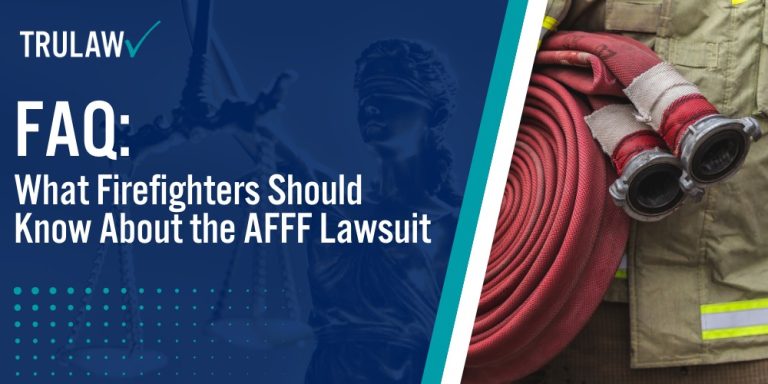
Lawyers Investigating AFFF and PFAS Exposure Claims
The ongoing AFFF firefighting foam litigation involves allegations against several major chemical companies.
Plaintiffs claim that exposure to PFAS in AFFF has led to various cancers (including prostate and testicular cancer) and has contaminated local water supplies.
Scientific studies and public health reports have increasingly supported these claims, linking PFAS chemicals to serious health risks.
For instance, a recent study highlighted a 56% increased risk of thyroid cancer in individuals with higher levels of PFAS exposure.
The litigation is further complicated by efforts from defendants like DuPont and Chemours to withhold documents under privilege claims, which plaintiffs are challenging in court.
Key allegations and developments include:
- Firefighting Foam Cancer Lawsuits: Many plaintiffs have initiated firefighting foam cancer lawsuits, claiming they developed cancer due to prolonged exposure to AFFF.
- Scientific Evidence: New research continues to emerge, strengthening the link between AFFF chemicals and cancer, including a significant study by the National Cancer Institute.
- Document Disputes: Plaintiffs are pushing for the release of thousands of documents from chemical manufacturers that could reveal knowledge of PFAS risks.
Currently, the AFFF MDL is progressing with ongoing case management and discovery processes, including the selection of bellwether trials to test the waters for future settlements or verdicts.
The court has issued several orders to streamline proceedings and manage the influx of new AFFF firefighting foam lawsuit claims, with the first personal injury trials expected to begin in late 2024.
Firefighters and those affected are encouraged to stay informed and seek legal advice to understand their options in this intricate legal landscape.
Table of Contents
Cancers Associated with AFFF Firefighting Foam Exposure
Firefighters who have been exposed to AFFF chemicals are at increased risk for certain types of cancer.
These chemicals, known for their persistence in the environment and the human body, have been linked to a variety of health issues.
Recent studies have highlighted that exposure to AFFF may lead to a higher incidence of certain cancers among firefighters.
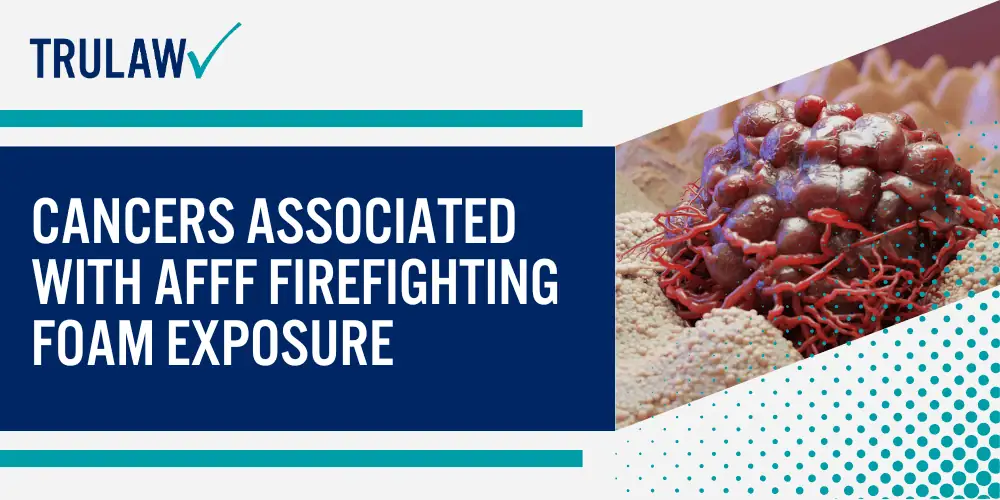
This has prompted legal actions and health investigations to address the potential risks associated with these substances.
The ongoing litigation seeks to hold manufacturers accountable for allegedly failing to disclose the dangers of PFAS in firefighting foams.
Types of Cancers Linked to AFFF Exposure
The Department of Veterans Affairs (VA) has recognized several cancers as being presumptively linked to PFAS exposure, particularly for veterans who served in specific geographical regions.
These include leukemia, multiple myeloma, bladder cancer, and ureter cancer.
The VA’s decision follows extensive research and advocacy efforts, underscoring the significant health risks posed by PFAS.
Studies have shown that individuals exposed to PFAS have a higher likelihood of developing these cancers, prompting the VA to offer expedited disability compensation to affected veterans.
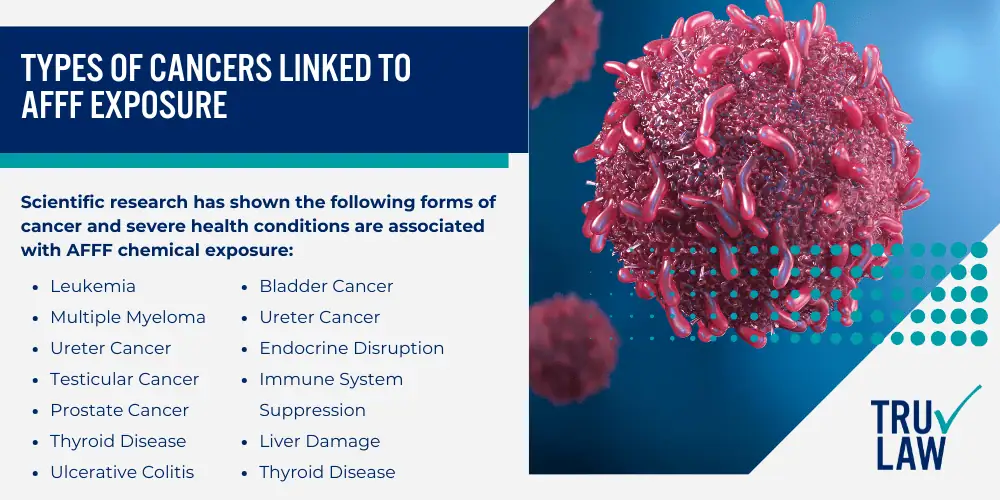
Scientific research has shown the following forms of cancer and severe health conditions are associated with AFFF chemical exposure:
- Leukemia: Identified as linked to PFAS exposure, particularly in military settings.
- Multiple Myeloma: Now recognized by the VA as a condition associated with exposure to PFAS.
- Ureter Cancer: Designated as a presumptive illness related to PFAS exposure.
- Testicular Cancer: Research indicates increased incidence among firefighters exposed to AFFF, as PFAS compounds disrupt endocrine function.
- Prostate Cancer: Findings suggest a higher risk tied to prolonged PFAS exposure, impacting urinary and reproductive systems.
- Thyroid Disease: PFAS exposure is linked with disruptions in thyroid hormone levels, leading to thyroid cancer and other disorders.
- Ulcerative Colitis: Some studies propose potential links to gastrointestinal inflammation due to PFAS chemical accumulation.
- Bladder Cancer: Studies have shown a correlation between PFAS exposure and bladder cancer incidence.
- Ureter Cancer: Similar links have been found between PFAS and cancers affecting the urinary system.
- Endocrine Disruption: PFAS can interfere with hormone function, leading to reproductive and developmental issues.
- Immune System Suppression: Exposure has been linked to decreased vaccine response and increased susceptibility to infections.
- Liver Damage: PFAS accumulation can damage liver, affecting metabolic processes and overall health.
- Thyroid Disease: Altered thyroid hormone levels have been observed, potentially leading to metabolic and cardiovascular issues.
The VA’s acknowledgment of these cancers is part of a broader initiative to address the health impacts of PFAS exposure.
This move is expected to facilitate quicker access to healthcare and benefits for veterans suffering from these conditions.
Other Health Risks of AFFF Exposure
Beyond cancer, exposure to AFFF and PFAS has been associated with a range of other health issues.
These include asthma, rhinitis, sinusitis, and several rare lung cancers.
The persistence of PFAS in the environment and its ability to accumulate in the human body over time contribute to these health risks.
The VA has also recognized these conditions as potentially linked to PFAS exposure, offering further support to affected individuals.
Scientific research continues to explore the full extent of health implications associated with PFAS, highlighting the need for ongoing monitoring and regulation of these substances.
The current state of research and legal actions underscores the importance of addressing the health risks associated with AFFF exposure.
Firefighters and veterans are encouraged to seek medical advice and legal counsel if they suspect they have been affected by PFAS.
As litigation progresses, it is essential for those exposed to stay informed about developments and potential avenues for compensation and healthcare support, including participating in AFFF personal injury cases.
AFFF Multi-district Litigation: MDL 2873
The AFFF Multi-district Litigation (MDL 2873) was initiated in December 2018 by the Judicial Panel on Multi-District Litigation, centralizing numerous lawsuits in the United States District Court for the District of South Carolina.
This litigation, overseen by Judge Richard M. Gergel, addresses claims against manufacturers of AFFF and PFAS chemicals.
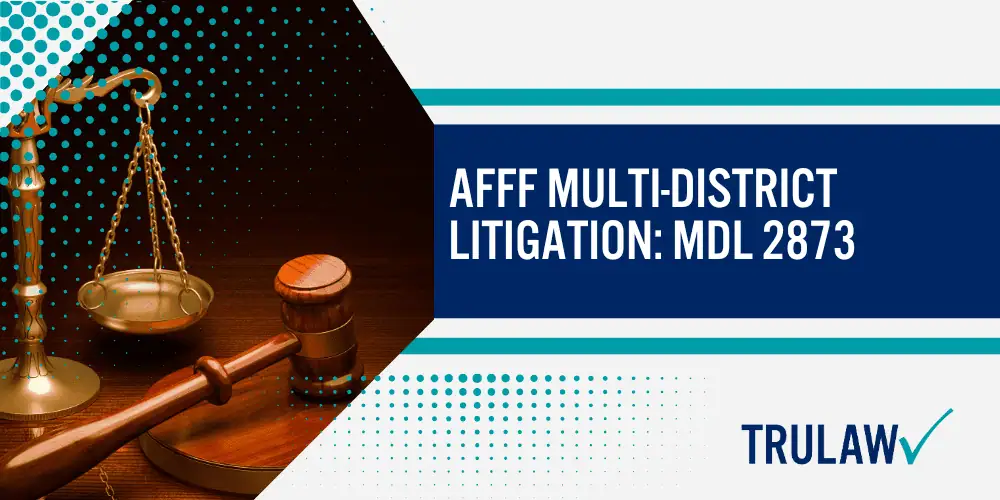
The first bellwether trial, a critical phase in the litigation process, was delayed to finalize a substantial financial settlement, reportedly around $10 billion, by the largest manufacturing defendant.
This MDL aims to streamline pretrial proceedings and resolve common factual questions efficiently.
Plaintiff Allegations in the AFFF MDL
Plaintiffs in the AFFF MDL allege that manufacturers knowingly sold firefighting foams containing PFAS, which contaminated water supplies and exposed individuals to harmful chemicals.
Scientific studies and internal documents suggest that companies knew the health risks but failed to adequately warn users.
The claims encompass a range of damages, including personal injury, property damage, and the need for medical monitoring.
- Health Risks: Plaintiffs assert that exposure to PFAS from AFFF has resulted in serious health conditions, including cancer.
- Environmental Impact: The lawsuits claim that PFAS contamination has affected local water supplies near military bases, airports, and industrial sites.
- Failure to Warn: Manufacturers are alleged to have failed to warn about the potential health risks associated with PFAS exposure.
- Negligence: The plaintiffs argue that the defendants were negligent in handling and disposing of PFAS, leading to widespread contamination.
These allegations form the basis of the legal battle against AFFF manufacturers, with plaintiffs seeking compensation for the damages suffered due to PFAS exposure.
Defendants in AFFF Firefighting Foam Lawsuits
The AFFF MDL targets numerous defendants, including major chemical manufacturers like 3M, DuPont, and Chemours.
These companies are accused of producing and distributing AFFF containing PFAS, despite knowing the potential health and environmental risks.
The litigation also involves various smaller manufacturers and distributors who played a role in disseminating these products.
The defendants are employing several legal defenses, including the government contractor defense, arguing that they followed military specifications in producing AFFF.
However, plaintiffs counter that these defenses are insufficient, given the alleged concealment of PFAS risks.
The defendants’ liability is a central issue in the MDL, with the potential for significant financial settlements or judgments.
As the MDL progresses, it remains a focal point for addressing the widespread impact of PFAS contamination, with potential implications for regulatory policies and corporate accountability in chemical manufacturing.
Firefighters and affected communities are encouraged to stay informed about the developments in this litigation, as it may influence future legal and environmental standards.
Eligibility Criteria for the AFFF MDL
To participate in the AFFF Multi-district Litigation (MDL 2873), individuals must meet specific eligibility criteria, primarily focusing on exposure to AFFF containing PFAS chemicals.
Plaintiffs typically include firefighters, military personnel, and others who have used or been exposed to AFFF in occupational settings.
The litigation addresses claims of personal injury, property damage, and environmental contamination linked to PFAS exposure.
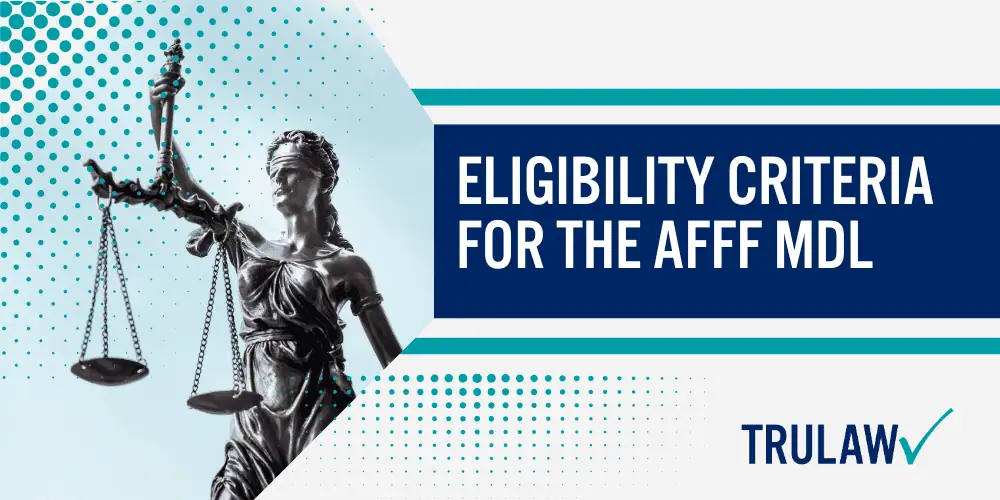
Eligibility often requires documented evidence of exposure and a medical diagnosis of conditions associated with PFAS, such as certain types of cancer or other health complications.
Potential claimants are encouraged to consult with legal professionals to assess their eligibility and explore their options for joining the MDL.
Steps to Take If You Have Been Exposed to AFFF Foam
If you suspect exposure to AFFF foam, particularly in occupational settings, it is essential to take immediate action to protect your health and legal rights.
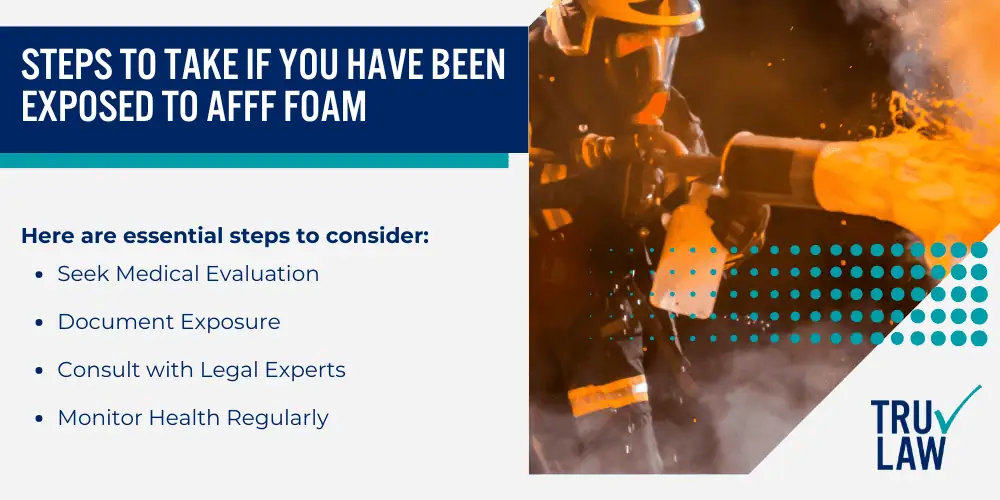
Here are essential steps to consider:
- Seek Medical Evaluation: Obtain a thorough medical examination to identify any health issues potentially linked to PFAS exposure.Early detection is vital for effective treatment and documentation of health conditions.
- Document Exposure: Keep detailed records of your exposure, including dates, locations, and circumstances.This information is crucial for building a strong legal case.
- Consult with Legal Experts: Contact AFFF firefighting foam lawyers experienced in this litigation to discuss your situation and determine your eligibility for joining the MDL.Legal counsel can provide guidance on the necessary documentation and the litigation process.
- Monitor Health Regularly: Continue regular health check-ups to monitor for any emerging symptoms related to PFAS exposure.Staying informed about your health status is essential for timely intervention and legal claims.
By following these steps, individuals can ensure they are well-prepared to pursue legal action and seek compensation for any harm caused by AFFF exposure.
AFFF Chemicals: Occupational Exposure Claim
Firefighters, military personnel, and industrial workers are among those most at risk due to the frequent use of firefighting foams in their work environments.
Claims related to occupational exposure often involve significant health risks, including cancer and other severe conditions.
Plaintiffs allege that manufacturers like 3M and DuPont failed to disclose the dangers associated with PFAS, leading to widespread health and environmental impacts.
To support an occupational exposure claim, individuals must demonstrate a direct link between their work activities and exposure to AFFF.
This typically involves providing employment records, exposure documentation, and medical evidence of related health issues.
Legal representation is vital in managing the intricacies of these claims and ensuring that plaintiffs receive fair compensation for their injuries and losses.
As the litigation progresses, those affected by AFFF exposure need to stay informed about developments and actively participate in their legal proceedings to achieve the best possible outcomes.
AFFF Firefighting Foam Lawsuit Settlements
As AFFF firefighting foam lawsuits progress, the outcomes often result in settlements that can reach substantial amounts, potentially exceeding $600,000 for individuals with compelling evidence.
Settlements are pivotal in providing compensation to those affected by PFAS chemicals in AFFF, which have been linked to cancer and other health issues.
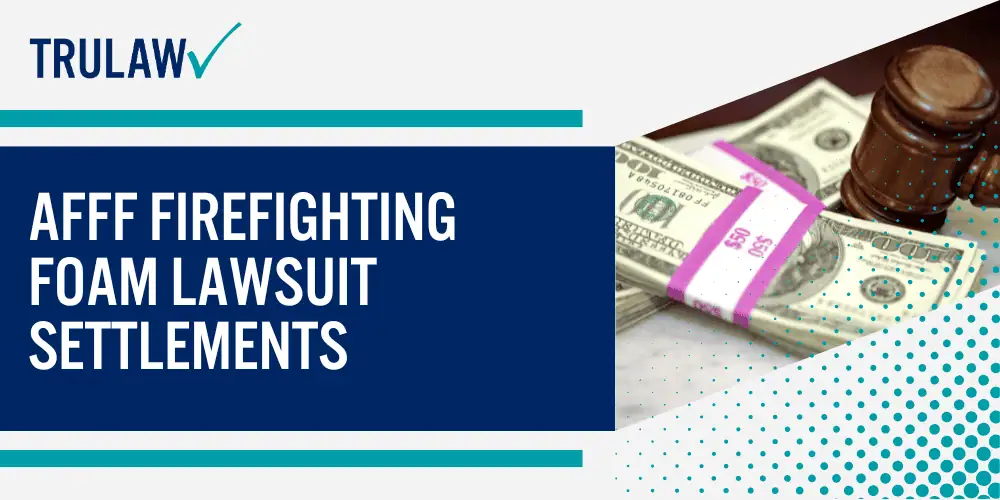
The ongoing litigation has spurred interest globally, influencing corporate accountability and environmental safety measures.
Settlements not only address the damages experienced by plaintiffs but also set a precedent for future cases involving chemical exposures.
AFFF Settlement Tiers: Tier I, II, and III
The settlement process for AFFF lawsuits is often categorized into tiers, with each tier reflecting the severity of the exposure and the resultant health impacts.
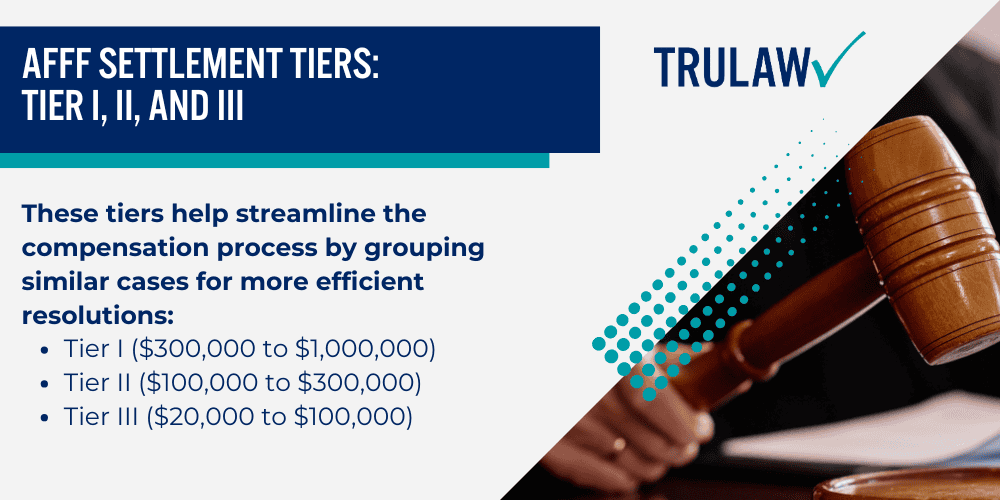
These tiers help streamline the compensation process by grouping similar cases for more efficient resolutions:
- Tier I: This highest tier generally includes plaintiffs with significant and prolonged occupational exposure to AFFF and those diagnosed with the most severe forms of cancer, such as pancreatic or kidney cancer. Settlements in this tier may range from $300,000 to $600,000 or more.
- Tier II: Plaintiffs with moderate exposure levels and less severe health impacts, like testicular or prostate cancer, fall into this middle tier. Settlement amounts for Tier II cases typically range from $100,000 to $300,000.
- Tier III: The lowest tier comprises cases with limited exposure and health effects. Settlements here might range from $20,000 to $100,000.
These tiers indicate how settlements are structured and help ensure that compensation reflects the extent of a plaintiff’s harm and exposure.
Factors Influencing AFFF Settlement Amounts
Several key factors influence the settlement amounts in AFFF lawsuits.
Understanding these factors can help plaintiffs and their legal representatives manage settlements more effectively:
- Evidence Strength: The quality and abundance of evidence, including medical records and employment documentation, are critical in determining settlement amounts.
- Severity of Health Impact: The nature of the illness, such as the type of cancer diagnosed and its impact on the plaintiff’s life, plays a significant role in influencing settlement figures.
- Extent of Exposure: Plaintiffs with longer and more frequent exposure to AFFF generally receive higher settlements, reflecting the increased risk and potential damage incurred.
- Liability Assessment: Determining liability among manufacturers and distributors, such as 3M and DuPont, can affect settlement negotiations.
These factors ensure settlements are fair and commensurate with the losses and challenges faced by those affected by AFFF exposure.
As the litigation continues, well-documented claims and effective legal representation remain paramount in achieving just outcomes.
Legal Representation for Your AFFF Claim
Securing the right legal representation is essential for individuals pursuing claims related to AFFF firefighting foam exposure.
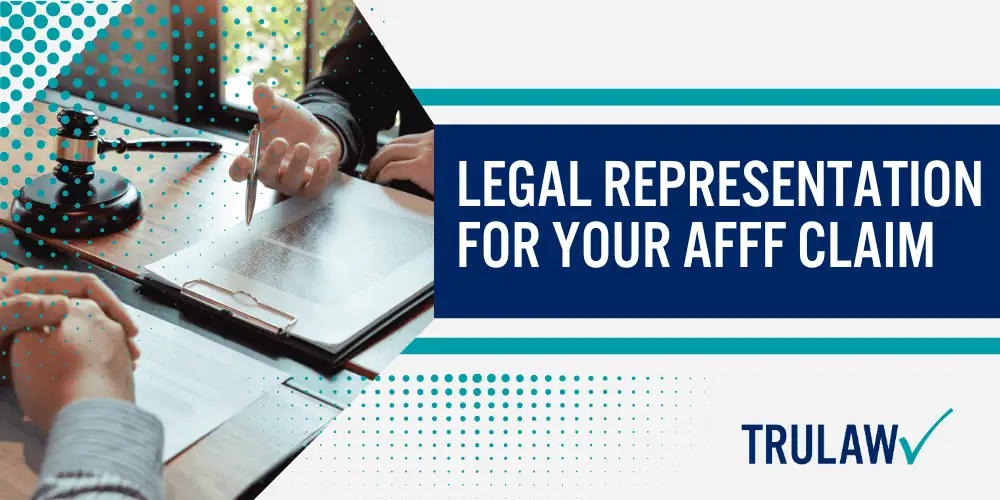
Given the scale of the ongoing multi-district litigation (MDL 2873), having experienced legal counsel can significantly influence the outcome of your case.
Importance of Finding an Experienced AFFF Lawyer
The importance of finding an experienced AFFF lawyer cannot be overstated.
These legal professionals bring a wealth of knowledge about chemical exposure litigation, helping clients manage their cases.
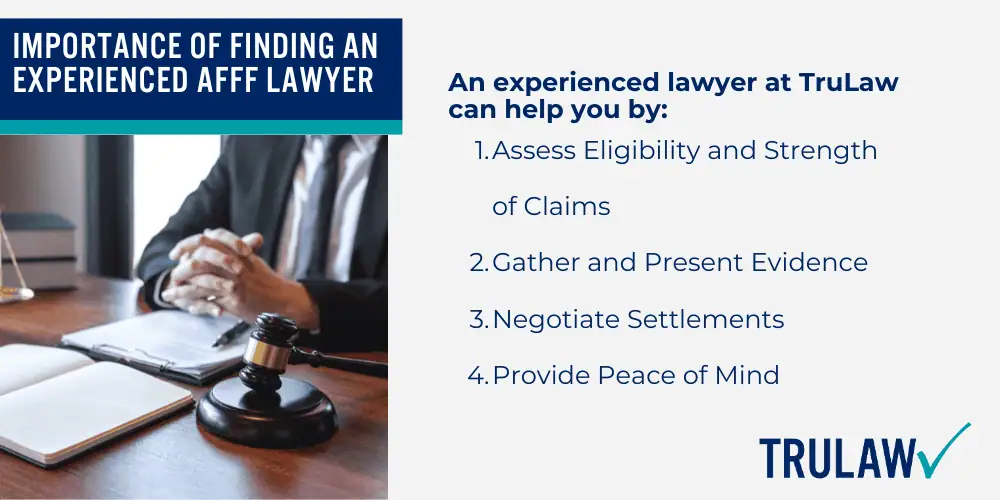
An experienced lawyer at TruLaw can help you by:
- Assess Eligibility and Strength of Claims: They evaluate the specifics of your exposure and health impacts to determine the viability of your claim.
- Gather and Present Evidence: Skilled attorneys know how to collect and present evidence effectively, ensuring your case is compelling and well-supported.
- Negotiate Settlements: With their expertise, they can negotiate favorable settlements, leveraging their understanding of the legal landscape and defendant strategies.
- Provide Peace of Mind: Knowing that your case is in capable hands allows you to focus on your health and recovery while your lawyer handles the legalities.
By choosing an AFFF lawyer with a proven track record in AFFF litigation (or similar chemical exposure lawsuits), plaintiffs can enhance their chances of receiving fair compensation for their injuries and losses.
AFFF Firefighting Foam Linked to Cancer
The link between AFFF firefighting foam and cancer has been a driving force behind the surge in litigation.
Numerous studies have highlighted the carcinogenic potential of PFAS chemicals found in AFFF, linking them to various cancers such as kidney, testicular, and pancreatic cancer.
This scientific evidence has been pivotal in supporting the claims of thousands of plaintiffs who allege that their health conditions are a direct result of PFAS exposure.
In conclusion, securing experienced legal representation is essential for individuals affected by AFFF exposure.
With the right lawyer, plaintiffs can effectively address the challenges of the litigation process, ensuring that their rights are protected and that they receive the compensation they deserve for the health impacts caused by AFFF firefighting foam.
TruLaw: Accepting Clients for the AFFF Firefighting Foam Lawsuit
Lawsuits are being filed by firefighters and others across the country who were exposed to toxic chemicals in AFFF firefighting foam and later developed cancer or other serious health issues.
TruLaw is currently accepting clients for the AFFF lawsuit.
A few reasons to choose TruLaw for your firefighting foam lawsuit include:
- If We Don’t Win, You Don’t Pay: The AFFF lawsuit lawyers at TruLaw and our partner firms operate on a contingency fee basis, meaning we only get paid if you win.
- Expertise: We have years of experience handling chemical exposure cases similar to the AFFF firefighting foam lawsuit, which helps us anticipate what we can expect to see in your case and the regulations we will be required to meet.
- Successful Track Record: TruLaw and our partner law firms have helped our clients recover billions of dollars in compensation through verdicts and negotiated settlements.
If you or a loved one were exposed to AFFF firefighting foam and later diagnosed with cancer, you may be eligible to seek compensation.
Contact TruLaw using the chat on this page to receive an instant case evaluation that can determine if you qualify for the AFFF lawsuit today.
AFFF Lawsuit Frequently Asked Questions
-
What firefighters should know about the AFFF lawsuit is that firefighters across the United States are increasingly filing lawsuits against manufacturers of aqueous film-forming foam (AFFF) due to the severe health issues linked to exposure to toxic chemicals such as per- and polyfluoroalkyl substances (PFAS) present in the foam.
AFFF firefighting foam, widely used by military and civilian firefighting units for decades, is now associated with various cancers and other serious health conditions.
AFFF lawsuit claims have been consolidated into an AFFF firefighting foam MDL in the US District Court for the District of South Carolina, overseen by Judge Richard Gergel.
Currently, the MDL includes nearly over 10,000 claims, alleging that manufacturers, such as 3M and DuPont knew about the dangers of PFAS chemicals but failed to warn the public.
-
The Department of Veterans Affairs has recognized several cancers linked to PFAS exposure, including leukemia, multiple myeloma, bladder cancer, and ureter cancer.
These conditions are now considered presumptively linked to AFFF exposure, particularly for veterans and firefighters with frequent contact with the foam.
-
AFFF lawsuit settlements can reach $600,000 or more depending on factors like exposure level and severity of health impacts.
The settlements are typically structured in three (3) tiers, with:
- Tier I cases (typically fatal or other conditions considered to be the most severe by the court) ranging from $300,000 to $600,000;
- Tier II cases (other severe claims) ranging from $100,000 to $300,000; and
- Tier III cases (moderately severe claims) ranging from $20,000 to $100,000.
-
Firefighters, military personnel, and others exposed to AFFF or PFAS chemicals in occupational settings may be eligible to file a lawsuit.
Claimants must typically provide documented evidence of exposure and a medical diagnosis of conditions associated with PFAS exposure.
-
If you suspect AFFF exposure, seek a thorough medical evaluation and maintain detailed records of your exposure circumstances.
It’s also crucial to consult with experienced AFFF firefighting foam lawyers who can evaluate your case and guide you through the legal process.
-
Major chemical manufacturers include, but are not limited to 3M, DuPont, and Chemours, are primary defendants in the AFFF MDL lawsuits.
These companies are accused of producing and distributing AFFF containing PFAS while allegedly knowing about potential health and environmental risks.
-
MDL 2873 is the consolidated multi-district litigation established in South Carolina that handles all AFFF-related lawsuits across the United States.
Judge Richard Gergel oversees the litigation, which currently includes over 9,800 claims and aims to streamline pretrial proceedings for efficient resolution of PFAS exposure cases.

Managing Attorney & Owner
With over 25 years of legal experience, Jessica Paluch-Hoerman is an Illinois lawyer, a CPA, and a mother of three. She spent the first decade of her career working as an international tax attorney at Deloitte.
In 2009, Jessie co-founded her own law firm with her husband – which has scaled to over 30 employees since its conception.
In 2016, Jessie founded TruLaw, which allows her to collaborate with attorneys and legal experts across the United States on a daily basis. This hypervaluable network of experts is what enables her to share the most reliable, accurate, and up-to-date legal information with our readers!
Additional AFFF Lawsuit resources on our website:
Here, at TruLaw, we’re committed to helping victims get the justice they deserve.
Alongside our partner law firms, we have successfully collected over $3 Billion in verdicts and settlements on behalf of injured individuals.
Would you like our help?
At TruLaw, we fiercely combat corporations that endanger individuals’ well-being. If you’ve suffered injuries and believe these well-funded entities should be held accountable, we’re here for you.
With TruLaw, you gain access to successful and seasoned lawyers who maximize your chances of success. Our lawyers invest in you—they do not receive a dime until your lawsuit reaches a successful resolution!
AFFF Lawsuit claims are being filed against manufacturers of aqueous film-forming foam (AFFF), commonly used in firefighting.
Claims allege that companies such as 3M, DuPont, and Tyco Fire Products failed to adequately warn users about the potential dangers of AFFF exposure — including increased risks of various cancers and diseases.
Depo Provera Lawsuit claims are being filed by individuals who allege they developed meningioma (a type of brain tumor) after receiving Depo-Provera birth control injections.
A 2024 study found that women using Depo-Provera for at least 1 year are five times more likely to develop meningioma brain tumors compared to those not using the drug.
Suboxone Tooth Decay Lawsuit claims are being filed against Indivior, the manufacturer of Suboxone, a medication used to treat opioid addiction.
Claims allege that Indivior failed to adequately warn users about the potential dangers of severe tooth decay and dental injuries associated with Suboxone’s sublingual film version.
Social Media Harm Lawsuits are being filed against social media companies for allegedly causing mental health issues in children and teens.
Claims allege that companies like Meta, Google, ByteDance, and Snap designed addictive platforms that led to anxiety, depression, and other mental health issues without adequately warning users or parents.
Transvaginal Mesh Lawsuits are being filed against manufacturers of transvaginal mesh products used to treat pelvic organ prolapse (POP) and stress urinary incontinence (SUI).
Claims allege that companies like Ethicon, C.R. Bard, and Boston Scientific failed to adequately warn about potential dangers — including erosion, pain, and infection.
Bair Hugger Warming Blanket Lawsuits involve claims against 3M — alleging their surgical warming blankets caused severe infections and complications (particularly in hip and knee replacement surgeries).
Plaintiffs claim 3M failed to warn about potential risks — despite knowing about increased risk of deep joint infections since 2011.
Baby Formula NEC Lawsuit claims are being filed against manufacturers of cow’s milk-based baby formula products.
Claims allege that companies like Abbott Laboratories (Similac) and Mead Johnson & Company (Enfamil) failed to warn about the increased risk of necrotizing enterocolitis (NEC) in premature infants.
Here, at TruLaw, we’re committed to helping victims get the justice they deserve.
Alongside our partner law firms, we have successfully collected over $3 Billion in verdicts and settlements on behalf of injured individuals.
Would you like our help?
